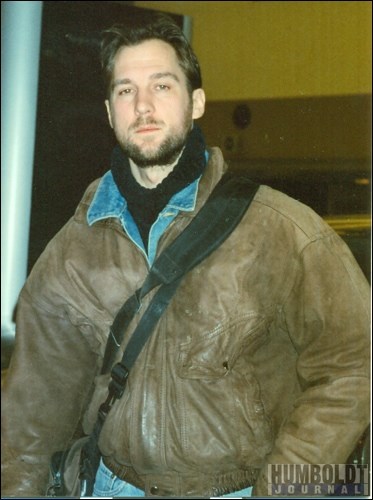He was on the other side of the island when the tsunami hit.
Humboldt nativeLance Domotor has been living in Japan since November 1998. He is currently living in Kobe, Hyogo, which in the west part of Honshu Island.
Kobe is over 800 kilometres away from Sendai, the largest city that was hit by the earthquake and tsunami in early March.
Since he is a long distance from the affected area of Japan, Domotor is not too concerned about his own safety in the country for various reasons.
On March 11, Domotor was teaching a class in Osaka when the earthquake struck at 2:30 p.m Japan time.
"We felt a slight tremor and the buildings swayed back and forth for a few minutes," said Domotor.
"Small tremors are not unusual in Japan, so we really had no idea there was a major earthquake occurring."
He didn't realize the impact the earthquake had in Sendai until he was watching CNN later that day.
Although the area hit by the earthquake has been devastated, there has not been much impact where Domotor's lives.
"Some companies have been affected in terms of production because some of their suppliers were in the tsumani-hit area," said Domotor.
"It's had a bit of an impact in the cars and electronics manufacturing, but it hasn't had an impact on the people in this region."
Domotor said he has heard from other people about the devastation in areas closer to the earthquake and tsunami.
"Tokyo has experienced a shortage of provisions in the supermarkets because everyone panicked and cleared off the shelves," said Domotor.
"I met a couple of lawyers who were sent from their Tokyo branch to the Osaka branch for the next week. They said the supermarkets were empty and they had no food."
Domotor explained although he is not in the affected area, he would be prepared if an earthquake did strike Kobe.
Domotor said maybe the reason he is prepared is from growing up in Saskatchewan.
"This just seems natural to me," said Domotor.
He estimates he could survive two to three months without electricity. He has a portable gas range to cook with, has 12 to 16 litres of water in bottles and always has excess food in his place.
"What's most amazing is when I meet people who have experienced the Great Hanshin Earthquake in Kobe in 1995 and they aren't prepared beyond a few days," said Domotor.
Although Japan is going through food shortages because of the recent disaster, Domotor has been impressed with the attitude and respect the residents show one another.
"The peaceful and respectful manner in which the Japanese have conducted themselves is a true testament to the character of the people and this nation," said Domotor.
"There is no nation on earth that demonstrates the type of civility and respect towards one another and others from outside as Japan. I've been to many countries and they are all hospitable but nowhere near as safe or peaceful."
And when it comes to the threat of a nuclear meltdown, Domotor doesn't think there is much of a one.
"I use the same media as everyone else but somehow people have a different interpretation than I do," said Domotor.
"There is no reason for people in California or British Columbia to be buying iodine tablets, yet there are people engaging in mass hysteria."
He explained that experts have stated the situation is nowhere near the situation that occurred in Chernolbyl in 1986.
"Chernobyl was active when it exploded and spewed radioactive materials a few hundred kilometers into the atmosphere for 10 days," said Domotor.
"The reactors at Fukushima have been shut down and what's of concern is the decayed energy or radioactive materials in the fuel rods or spent fuel rods that have been and could be released into the atmosphere, especially in the case of a meltdown."
Domotor said the fallout would only affect those within about a 100 kilometre perimeter.
"Tokyo might experience radiation at a level the equivalent of a CT scan (which is 6.9 millisieverts)," said Domotor.
"If you get a simple X-ray for bronchitis or pneumonia, you'll be exposed to 600 microsieverts or 0.6 millisieverts. People forget that we're exposed to radiation around us all the time."
Domotor said the mass hysteria has taken focus away from where it should be, on the people "literally sacrificing their lives to control the reactors."
"These people will most certainly be exposed to dangerous and harmful levels of radiation that will lead to an early death. They know this and they do it anyway. They do it because they have a great sense of duty, obligation, and responsibility to their profession and to the safety of their nation much like a firefighter, EMT, police officer or soldiers sent to far off places."




